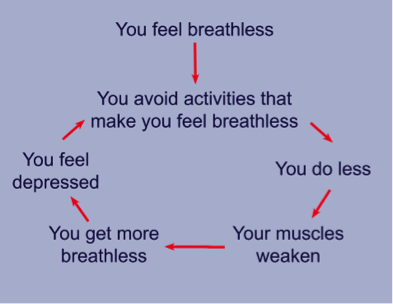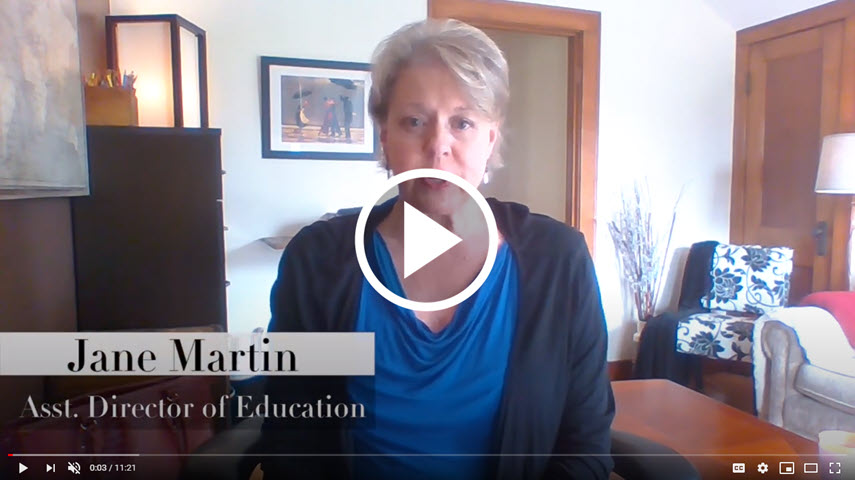Breathing Techniques
Before starting these techniques, ask your health care provider if they are right for you.
Having COPD makes it harder to breathe. And when it's hard to breathe, it's normal to get anxious, making you feel even more short of breath.

There are two breathing techniques that can help you get the air you need without working so hard to breathe: pursed lip breathing and diaphragmatic (also called belly or abdominal) breathing.
Better Breathing Tip: It's normal to hold your shoulders tense and high. Before starting any breathing technique, take a minute to drop your shoulders down, close your eyes, and relax.
Pursed Lip Breathing
This breathing technique helps you focus, slow your breathing down and stay calm. Pursed lip breathing should be used during and after exercise. It should be used with any activity that makes you feel short of breath.
To do pursed lip breathing:
- Breathe in through your nose (as if you are smelling something) for about two seconds.
- Pucker your lips like you're getting ready to blow out candles on a birthday cake.
- Breathe out very slowly for four to six seconds.
- Repeat the steps if needed.
Pursed lip breathing helps you to:
- Focus on your breathing
- Breathe slowly and deeply
- Release trapped air from your lungs
- Decrease feelings of breathlessness
- Increase the amount of time you can exercise or perform an activity
- Breathe in oxygen and exhale carbon dioxide more effectively
Breathing From the Diaphragm:
This type of breathing is also called abdominal breathing or “belly” breathing. Your abdomen should rise when you breathe in. It should lower as you breathe out. Your diaphragm is the muscle that separates the chest cavity from the stomach. Your diaphragm is your main muscle of breathing. When the diaphragm muscle tightens, the lungs expand. It is designed to do most of the work of breathing. When you have COPD, the diaphragm doesn't work as well and muscles in the neck, shoulders, and back are used. These muscles don't do much to move your air. Training your diaphragm to take over more “work of breathing” can help.
Diaphragmatic breathing is not as easy to do as pursed lip breathing. It is recommended that you get instruction from a respiratory health care professional or physical therapist experienced in teaching it.
It is best to try this technique for the first time when you are feeling rested and relaxed and while sitting back or lying down.
- Place one hand on your abdomen. Place one hand on your upper chest.
- Focus your breathing on your abdomen.
- As you breathe in, the hand on your abdomen should rise.
- As you breathe out, the hand on your abdomen should lower.
- Breathe in through the nose. Breathe out slowly through pursed lip.
- Practice this two to three times a day for five to ten minutes. Start by doing it while lying on your back. Then try it while sitting. Then try it while standing. Finally, try it while doing an activity.
As you become more comfortable with this type of breathing, you can use it to reduce your feelings of shortness of breath. You can use diaphragmatic breathing with all daily activities, such as:
- Stair climbing
- Walking
- Carrying or lifting items
- Showering or dressing
- Exercising

Jane Martin, Asst Director of Education, discusses and demonstrates pursed lip breathing and diaphragmatic breathing techniques.
Better Breathing Tip: Stop, Reset, Continue
When you are feeling short of breath during exercise or regular activities, use these 3 steps:
- Stop your activity.
- Reset by sitting down, relax your shoulders, and do pursed lip breathing until you catch your breath.
- Continue activity, doing pursed lip breathing as you go. Go at a slower pace if you need to.